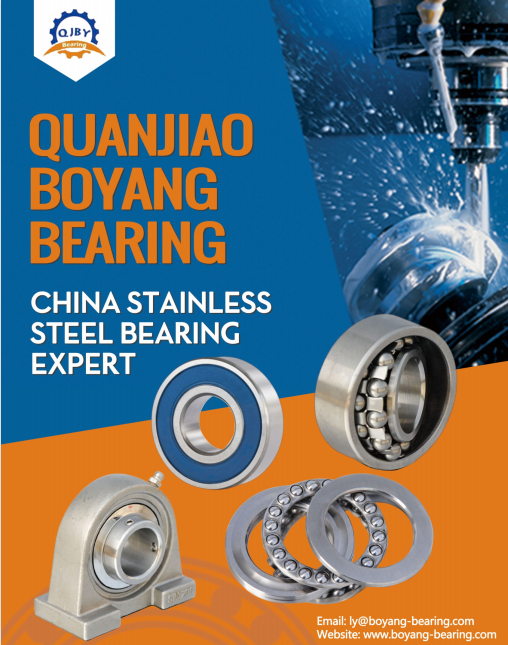9Crl 8 stainless steel bearing ring sleeve forging process
9Crl8 is a commonly used martensitic stainless steel. This steel has good corrosion resistance in weakly corrosive media and the temperature does not exceed 30°C. It is one of the commonly used steel types for rolling bearings. Due to its narrow forging temperature range and poor plasticity, single-piece reverse extrusion is often used to produce bearing rings, which wastes material and has low productivity. In order to reduce costs, the nesting process of 9Crl8 stainless steel bearing rings has been tried, and good results have been achieved.
1. Forging heating specifications
The equilibrium structure of 9Crl8 steel at room temperature is martensite plus carbide. When heated to above 950°C, it becomes single austenite. When the heating temperature is higher than 1150°C, ferrite appears and enters a dual-phase state, which is easy to occur during deformation. crack. Therefore, the forging temperature range of this stainless steel is 1120℃ for the initial forging and 950℃ for the final forging. Electric furnace heating is used to ensure the quality of forgings.
The standard heating material section of the original process is heated to 800°C in the furnace and kept for 30 m_in, and then heated to 1120'C and kept for 30 m_in. Due to the high temperature heating time being too long, coarse austenite forms coarse martensite in the subsequent process, the plasticity is greatly reduced, and the impact resistance of the bearing ring is reduced. Finally, the heated standard material section was loaded into the furnace at 1000°C and kept for 20 minutes. Then it was rapidly heated to 1120°C and kept for 15 minutes to start forging. The effect was good.
2. Determination of forging process
The conventional nesting process of bearing rings is shown in Figure 3. This process has the following problems with 9Crl8 stainless steel nesting materials. Forging cracks are prone to appear on the outer diameter surface and bottom surface of the sleeve cutting core. The cause mechanism of cracks is due to the poor plasticity of 9Crl8 stainless steel. When using the single-piece back-extrusion process, the material is in a state of extremely high three-dimensional compressive stress, which avoids the occurrence of cracks. For this reason, the stewed extrusion preforming process is added before nesting.
This sequence solves this key problem that restricts the quality of forgings.
3. Cooling and lubrication
Severe mold wear is another factor affecting the mass production of 9Crl8 stainless steel bearing rings. The wear amount of the inner ring back-extrusion die reaches 1 rnlTl after producing about 150 forgings. Moreover, the bottom-cutting punch is prone to sticking to material, making it impossible to continue production. Analysis of the main reason is that 9Crl8 stainless steel has poor thermal conductivity and fluidity and the mold heating block. In order to solve this problem, tap water is used for forced cooling and aqueous graphite lubrication of the mold during production. The mold life has been increased from less than 150 pieces to more than 2,000 pieces.
4. Conclusion
It is feasible to use the stewed extrusion nesting process for 9Crl8 stainless steel bearing rings, and the energy and material saving effects are significant. Taking 6204/01 set of 6205/02 as an example, producing 10,000 pieces can save 660 kg of steel, which is 16,500 yuan based on the current price of 25 yuan/k. Moreover, two products can be produced by heating and cutting only once, saving 600 yuan of energy per 10,000 pieces, which has significant economic benefits.
Compared with ordinary bearings, QJBY stainless steel bearings not only have obvious advantages in materials, but also have stricter control on precision in process and precision than ordinary bearings. Stainless steel bearings work stably during operation, with low noise, corrosion resistance and wide application.The bearing ring and rolling element material are vacuum-quenched and tempered by AISI SUS440C stainless steel (China grade: 9Cr18Mo, 9Cr18). The frame material of the cage and seal ring is made of AISI304 stainless steel (China grade: OCr18Ni9). Compared with ordinary bearing steel, stainless steel bearings have stronger rust and corrosion resistance. Choose suitable lubricants, dustproof covers, etc., and can be used in the environment of -60 ° C ~ +300 ° C.

 English
English Spanish
Spanish French
French German
German Czech
Czech Portugal
Portugal Italy
Italy Korean
Korean Japanese
Japanese Vietnamese
Vietnamese Turkish
Turkish Arabic
Arabic Russian
Russian Czech
Czech Thai
Thai Irish
Irish Bulgarian
Bulgarian Poland
Poland Croatian
Croatian Ukrainian
Ukrainian Bosnian
Bosnian Lithuanian
Lithuanian Latvian
Latvian Romanian
Romanian Greek
Greek Danish
Danish Hungary
Hungary Norwegian
Norwegian Finnish
Finnish Dutch
Dutch Swedish
Swedish Slovak
Slovak Slovenian
Slovenian Indonesian
Indonesian Bengali
Bengali Serbian
Serbian Uzbek
Uzbek
